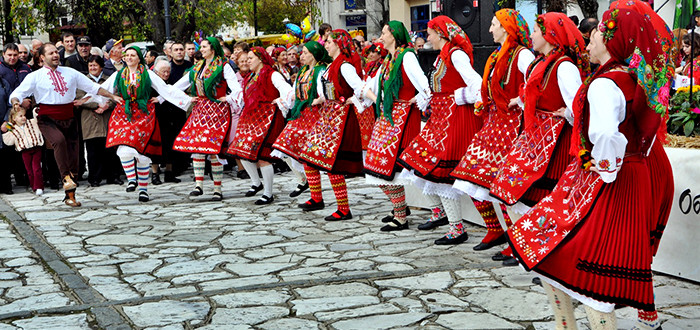An international symposium “European voices: Multipart singing in the Balkans and in the Mediterranean” was helded from March 11-13, 2005. The symposium was organized as a joint venture of the Institut fur Volkcmusikforschung und Ethnomusikologie, the Universitat fur Musik und darstellende Kunst Wien, the Osterreichisches Nationalkomitee im ICTM, and Wiener Konzerthaus. A research centre of European traditional polyphony was established (Ardian Ahmedaja, Gerlinde Haid). Organisers of the symposium are planning to publish the full papers. According to the published abstracts, the following papers were delivered:
1. Giorgio Adamo, Italy. “Social roles, group dynamics and sound structures in multipart vocal performance: examples from Central and Southern Italy”.
2. Ardian Ahmedaja, Austria. “Changes within tradition: parts and their number in the Albanian multipart songs”.
3. Sofia Bajrektaveric, Austria. “On multipart singing in Bosnia and Herzegovina”.
4. Mauro Balma, Italy. “Liguria: A multipart song from the Alps to the sea”.
5. Rudolf Brandl, Germany. “New considerations concerning diaphony in southeast Europe”.
6. Josko Caleta, Croatia. “The modern klapa movement – multipart singing as a popular tradition”.
7. Salwa el-Shawan Castelo-Branco, Portugal. “Vocal polyphony in Portugal: The case of Alentejo”.
8. Jean-Jacques Casteret, France. “Multi-part singing in France mainland: A typological approach”.
9. Dimitrije Golemovich and Selena Rakocevic, Serbia and Montenegro. “Two-part singing in Serbia and Montenegro”.
10. Thede Kahl, Romania. “Polyphony among the Aromanians of southeast Europe; situation, distribution and desiderata”.
11. Bernard Lortat-Jacob, France. “Cord and discord in polyphony”.
12-14. Ignazio Macchiarella, Italy. a) “Continuity, transformation and new creations in Corsican multipart singing”; b) “La voce a Quattro: Multipart singing in Sardinia”; c) The variety of multipart singing structures in Sicily”.
15. Jaume Ayats and Silvia Martinez, Spain. “Singing processions and festivities: A look at different models of multipart singing in Spain”.
16. Lozanka Peycheva, Bulgaria. “Multipart songs and transformations: A Bulgarian case”.
17. Velika Stojkova, Macedonia. “Macedonian multipart singing: some basic characteristics”.





